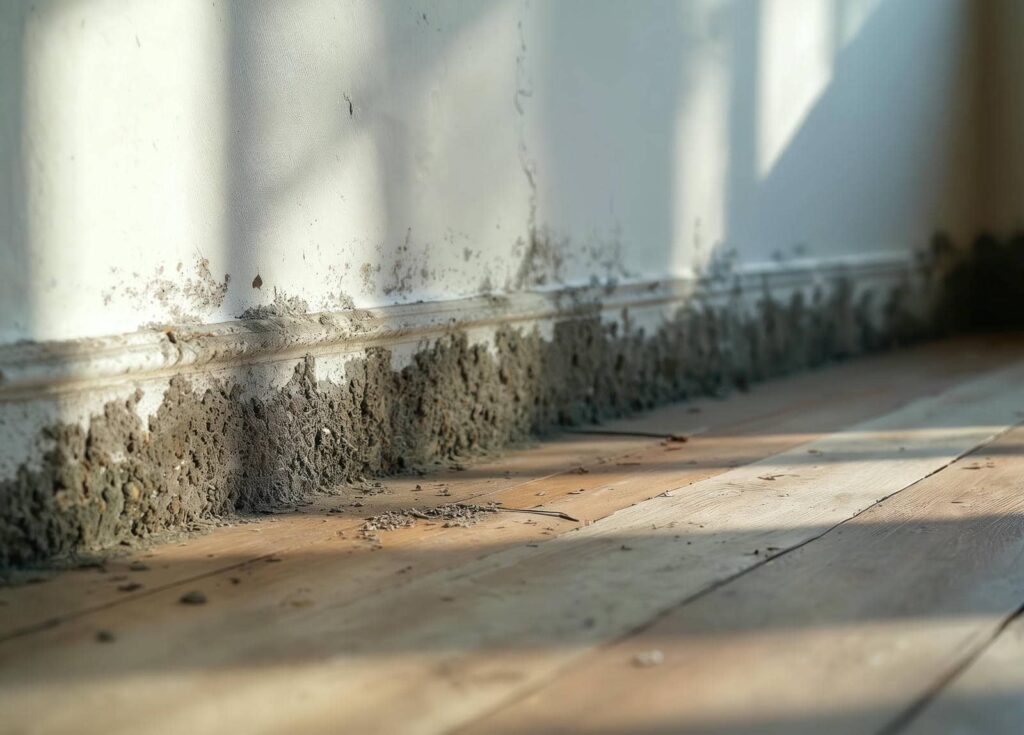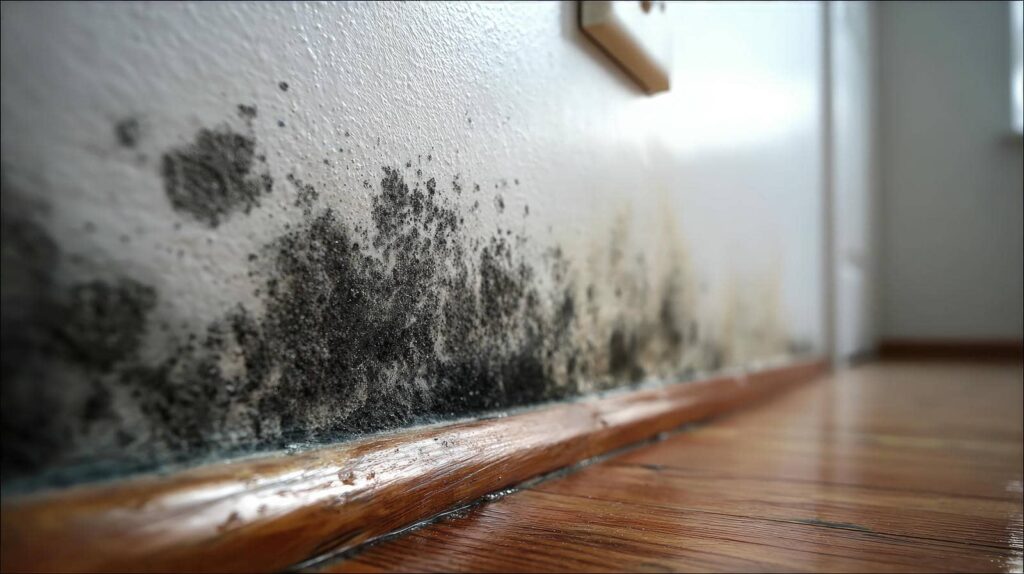Contents
When it comes to maintaining a lush, weed-free lawn during the spring season, exploring effective organic methods is key. By incorporating natural solutions and eco-friendly practices, you can tackle weeds while nurturing your lawn’s overall health. From innovative mulching techniques to the utilization of beneficial insects, the domain of organic weed control offers a plethora of sustainable options. So, why not discover how these methods can transform your lawn care routine into a harmonious blend of nature and nurture?
Key Takeaways
- Mulching with organic materials suppresses weed growth naturally.
- Use homemade vinegar and salt solutions as eco-friendly weed killers.
- Integrate beneficial insects like ladybugs for natural weed control.
- Maintain healthy soil to prevent weed establishment.
- Solarize soil with clear plastic to kill weeds and seeds organically.
Understanding Spring Lawn Weeds
Spring lawn weeds emerge in the springtime due to favorable conditions such as increased moisture and sunlight, often competing with desired grass for resources. Identifying common weeds is essential for effective weed control. Some common lawn weeds include dandelions, crabgrass, clover, and chickweed. Each weed has unique characteristics that help identify it. Dandelions, for example, have bright yellow flowers and deeply toothed leaves, while crabgrass has wide, flat blades that form a rosette shape.
To effectively control weeds, mastering weed identification techniques is vital. Observing the shape of leaves, color, texture, and growth habits can aid in accurate weed identification. For instance, clover can be identified by its trifoliate leaves and white, pink, or red flowers. Understanding the lifecycle of different weeds can also assist in timing control measures effectively. By familiarizing yourself with common weeds and their identifying features, you can better target them with appropriate organic control methods, ensuring a healthier, weed-free lawn.
Importance of Organic Weed Control
Implementing organic weed control methods is crucial for maintaining a healthy and environmentally friendly lawn. By choosing organic alternatives and chemical-free solutions, you not only protect your lawn but also safeguard the ecosystem around you. Sustainable practices and eco-friendly options guarantee that your lawn stays free from harmful chemicals that can leach into the soil and water sources. Organic weed control methods work with nature to manage weed growth without disrupting the balance of your lawn’s ecosystem.
Chemical-free solutions not only help in controlling weeds but also promote biodiversity in your lawn. By opting for organic alternatives, you contribute to the overall health of your lawn and the environment. These methods focus on long-term solutions that support the natural processes within your lawn, fostering a resilient and vibrant ecosystem. Embracing eco-friendly options for weed control establishes a harmonious relationship between your lawn and the surrounding environment, creating a sustainable and thriving outdoor space for you to enjoy.
Soil Health and Weed Prevention
To keep weeds at bay in your lawn, it’s essential to focus on maintaining healthy soil. Healthy soil acts as a natural barrier against weed growth by promoting the growth of a lush and dense lawn that crowds out weeds.
Ensuring your soil is nutrient-rich and maintaining the proper pH levels can further help inhibit weed establishment.
Healthy Soil Blocks Weeds
Improving soil health through proper management practices is essential for effectively preventing weed growth in your lawn. Soil biology plays a vital role in weed competition. Healthy soil teeming with beneficial microorganisms can naturally suppress weed growth by outcompeting them for resources.
Encouraging soil biodiversity through practices like composting, mulching, and avoiding the use of harsh chemicals helps create an environment where weeds struggle to thrive. Additionally, maintaining proper soil pH levels and ensuring adequate drainage further supports a robust soil ecosystem that inhibits weed establishment.
Nutrient-Rich Soil Prevents Weeds
Encouraging a nutrient-rich soil environment is crucial to naturally preventing weed growth in your lawn by fostering conditions that support beneficial microbial activity and plant health.
Preventive measures such as incorporating organic solutions like compost or well-aged manure can enhance soil quality, providing essential nutrients for your grass while inhibiting weed establishment.
Healthy soil promotes strong root systems in your lawn, making it more competitive and resistant to weed invasion.
By maintaining proper soil structure and fertility through organic practices, you create an environment where desirable turf thrives, leaving less space and resources for weeds to take hold.
Implementing these strategies not only aids in weed prevention but also contributes to the overall health and vitality of your lawn.
Proper Soil Ph Inhibits Weeds
Maintaining the appropriate pH level in your soil is essential for inhibiting weed growth and promoting overall soil health. When the soil pH is within the ideal range, it helps create conditions that are unfavorable for many weed species to thrive, giving your grass a competitive edge.
To guarantee ideal soil pH levels, consider the following:
- Regular Soil Testing: Conduct soil tests to monitor pH levels and make necessary adjustments.
- Lime Application: If soil is too acidic, apply lime to raise pH levels gradually.
- Organic Matter Addition: Incorporate compost or organic matter to buffer pH fluctuations.
- Mulching: Mulch around plants to help maintain consistent soil pH and reduce weed competition.
Mulching for Weed Suppression
To effectively suppress weeds in your lawn using mulch, it’s important to understand the different types of mulch available and the best application techniques for each.
Mulches like wood chips, straws, or shredded leaves can create a barrier that inhibits weed growth by blocking sunlight and preventing weed seeds from germinating.
Properly applying mulch around plants and in garden beds can greatly reduce the need for manual weeding and help maintain a healthy, weed-free lawn.
Mulch Types
Experiment with a variety of mulch types to effectively suppress weeds in your lawn. Mulching not only helps in weed control but also conserves soil moisture and adds nutrients as it breaks down.
Here are some mulch types you might want to explore:
- Grass Clippings: Rich in nitrogen, they break down quickly but may mat together.
- Wood Chips: Long-lasting and visually appealing, but may deplete nitrogen as they decompose.
- Straw: Lightweight and easy to spread, but seeds may be present.
- Leaves: Abundant and free, but may compact and need shredding for better coverage.
Experiment with different mulch types to find what works best for your lawn’s weed control and overall health.
Application Techniques
Experimenting with various application techniques when mulching can greatly enhance weed suppression in your lawn while promoting overall plant health. Proper mulching not only helps to control weeds but also aids in moisture retention and soil temperature moderation. When mulching for weed suppression, consider the seed spacing and watering needs of your specific plants. Additionally, using mulch to create shade can help inhibit weed growth by limiting sunlight availability. Mowing strategies should also be taken into account; maintaining the appropriate grass height can prevent weed seeds from germinating and establishing. By combining these techniques, you can create a healthy lawn environment that naturally suppresses weed growth while supporting the growth of your desired plants.
| Application Techniques | Benefits | Considerations |
|---|---|---|
| Proper Seed Spacing | Promotes plant growth | Prevents overcrowding |
| Adequate Watering | Fosters healthy roots | Avoids waterlogging |
| Creating Shade | Inhibits weed growth | Consider plant light requirements |
| Strategic Mowing | Prevents weed seed germination | Maintains grass health |
Homemade Weed Killer Recipes
For effective homemade weed-killer recipes, utilizing ingredients readily available in your kitchen can provide a natural and cost-effective solution for managing unwanted plants in your lawn. Here are some DIY weed-killer recipes to help you tackle those pesky weeds:
Vinegar Spray: Mix white vinegar with a small amount of dish soap and water in a spray bottle. The acetic acid in vinegar is effective at killing weeds by drying them out.
Corn Gluten: Sprinkle corn gluten meal on your lawn. This natural pre-emergent herbicide inhibits weed seed germination, reducing weed growth.
Salt Solution: Dissolve salt in water and spray it directly on weeds. Salt dehydrates plants, making it an effective weed killer. Be cautious as salt can harm other plants, so apply it carefully.
Boiling Water: Boil water and pour it over the weeds. The hot water will scald the weeds, causing them to wither and die.
These homemade weed-killer recipes offer eco-friendly alternatives to chemical herbicides, helping you maintain a weed-free lawn naturally.
Beneficial Insects for Weed Management
Utilizing beneficial insects in weed management can greatly contribute to reducing weed populations in your lawn naturally. Insect predators play an important role in organic pest management by preying on common lawn weeds, helping to keep their populations in check. Ladybugs, lacewings, and ground beetles are examples of beneficial bugs that feed on weed seeds, small insects, and even weed leaves, contributing to overall weed control in your lawn.
Ladybugs, also known as ladybird beetles, are voracious predators of aphids and other soft-bodied insects that can damage plants. By introducing ladybugs to your lawn, you can combat aphids while indirectly aiding in weed management. Lacewings are another beneficial insect to take into account, as their larvae feed on a variety of pests, including aphids, caterpillars, and mites. Ground beetles are excellent at controlling weed seeds and small insects that can harm your lawn.
Incorporating these beneficial insects into your lawn ecosystem can enhance the effectiveness of your organic weed control methods, creating a more balanced and sustainable approach to managing weeds in your yard.
Natural Pre-Emergent Weed Control
To naturally control weeds before they emerge in your lawn, consider incorporating organic pre-emergent methods that target weed seeds effectively. Utilizing natural herbicides and alternative options can help prevent weed seed germination, providing a proactive approach to weed control.
Here are some practical tips to implement natural pre-emergent weed control effectively:
Corn Gluten Meal: Apply corn gluten meal before weed seeds start germinating to inhibit root development.
Vinegar Solutions: Use a vinegar solution as a natural herbicide on young weeds to prevent further growth.
Essential Oils: Certain essential oils like clove or cinnamon can act as natural pre-emergent herbicides when applied correctly.
Weed Seed Timing: Understand the timing of weed seed germination in your region to apply pre-emergent methods when they’re most effective.
Solarization for Weed Removal
Consider utilizing solarization as a successful method for removing weeds from your lawn. Solarization involves using the sun’s heat to kill weeds and seeds in the soil. To start, wet the soil thoroughly, then cover it with a clear plastic weed barrier. The plastic traps the heat from the sun, creating a greenhouse effect that raises the soil temperature, killing weeds and their seeds. This heat treatment can effectively control annual weeds, perennial weeds, and even some pests in the soil.
One of the key advantages of solarization is its ability to reach deep into the soil, targeting weed seeds that may be buried. This method is environmentally friendly, as it eliminates the need for chemical herbicides. Additionally, solarization can improve soil health by increasing nutrient availability and microbial activity.
To maximize the efficiency of solarization, make sure the plastic covers the entire weed-infested area and seal the edges to trap the heat effectively. Leave the plastic in place for 4 to 6 weeks during the hottest part of the summer for best weed control results.
Cultural Practices for Weed Prevention
Implementing proper cultural practices in your lawn maintenance routine is essential for effective weed prevention. By following these strategies, you can maintain a healthy lawn that naturally combats weed growth:
Companion Planting: Integrate plants that naturally repel weeds, such as marigolds or clover, alongside your grass to discourage weed growth.
Regular Mowing: Keep your lawn at the recommended height for your grass type to promote thick turf that inhibits weed germination and growth.
Proper Watering: Water deeply but infrequently to encourage deep root growth in your grass, making it more competitive against weeds.
Aerate Your Lawn: Regularly aerating your lawn helps improve soil drainage, prevents thatch buildup, and promotes stronger grass growth, all of which contribute to weed prevention.
Review
As the caretaker of your lawn, remember that organic methods are like the wise owl guarding the forest. By nurturing your soil, using natural weed control techniques, and promoting biodiversity, you’re creating a resilient ecosystem that thrives without harmful chemicals.
Just as the forest maintains balance through its diverse inhabitants, your lawn will flourish with a little care and dedication. Embrace the importance of nature and watch your lawn bloom with vitality and beauty.




